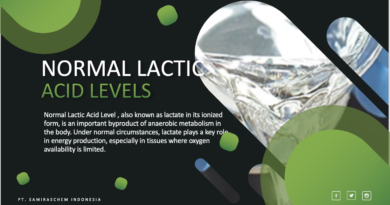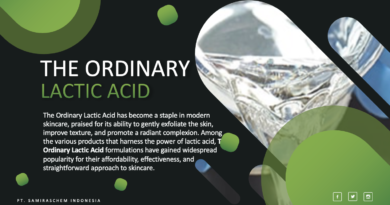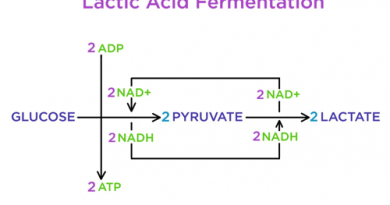What is lactic acid ?
What is lactic acid ? , a naturally occurring organic acid, plays a crucial role in various biological and industrial processes. It is a carboxylic acid with the molecular formula C3H6O3 and exists in two optical isomers: L-lactic acid and D-lactic acid. This compound is commonly found in muscle tissue, fermented foods, and several industrial applications. Understanding its properties, production, applications, and effects on health and industry provides insight into its widespread importance.
Chemical Properties and Structure – What is lactic acid ?
Lactic acid belongs to the alpha-hydroxy acid (AHA) family, characterized by a hydroxyl (-OH) group adjacent to a carboxyl (-COOH) group. Its structure makes it highly soluble in water and an essential intermediate in metabolic processes. The two enantiomers, L-lactic acid and D-lactic acid, exhibit different biological functions. L-lactic acid is predominant in biological systems, especially in human metabolism.
Production of Lactic Acid
Lactic acid is produced through both biological and synthetic processes. The biological production involves microbial fermentation, while synthetic production uses chemical methods.
Biological Production
Fermentation of carbohydrates is the primary biological method for production. bacteria (LAB), such as Lactobacillus, Pediococcus, and Streptococcus species, metabolize sugars like glucose, sucrose, and lactose to produce it. This process occurs under anaerobic conditions and is widely used in the food and pharmaceutical industries.
Key steps in fermentation:
-
- Substrate Utilization: Microorganisms utilize carbohydrates as a carbon source.
- Glycolysis Pathway: Glucose broken down into pyruvate via glycolysis.
- Formation: Pyruvate is converted to by the enzyme lactate dehydrogenase.
Synthetic Production
Chemical synthesis involves hydrolysis of lactonitrile or oxidation of propylene glycol. Though less common than fermentation, synthetic production allows for high purity and large-scale manufacturing.
Applications of Lactic Acid
Serves diverse applications across multiple industries:
Food Industry
-
- Preservative: Lactic acid acts as a natural preservative, inhibiting microbial growth.
- Flavor Enhancer: Adds a mild sour taste to foods like yogurt, cheese, and pickles.
- Acidulant: Adjusts pH levels in processed foods and beverages.
Pharmaceutical and Medical Uses
-
- Intravenous Fluids: Used in lactated Ringer’s solution for electrolyte balance.
- Topical Treatments: Found in skincare products to promote exfoliation and hydration.
- Drug Formulation: Serves as a pH regulator in pharmaceutical formulations.
Cosmetic Industry
-
- Skin Care: As an AHA, helps remove dead skin cells and improve skin texture.
- Anti-Aging Agent: Reduces fine lines and wrinkles by stimulating collagen production.
- Moisturizer: Retains moisture, enhancing skin hydration.
Industrial and Chemical Applications
-
- Biodegradable Plastics: Used in the production of polylactic acid (PLA), an eco-friendly polymer.
- Leather and Textile Processing: Functions as a pH regulator and tanning agent.
- Detergents and Cleaners: Acts as a natural descaling and antimicrobial agent.
Health Effects and Metabolism
Lactic acid plays a critical role in human metabolism, particularly in energy production. It is produced during anaerobic respiration when oxygen levels are low.
-
- Energy Metabolism: During intense exercise, glucose convert, which provides energy to muscles.
- Lactic Acidosis: Excess accumulation in the bloodstream can lead to metabolic acidosis, a condition requiring medical attention.
- Gut Health: Beneficial bacteria contribute to a healthy gut microbiome, aiding digestion and immunity.
Environmental Impact and Sustainability
The production from renewable sources like corn, sugarcane, and cassava supports sustainability. Biodegradable plastics made from polylactic acid reduce plastic waste and environmental pollution. Additionally, advancements in fermentation technology improve production efficiency, making an environmentally friendly alternative to synthetic chemicals.
Conclusion – What is lactic acid ?
A versatile organic compound with widespread applications in food, pharmaceuticals, cosmetics, and industrial processes. Its natural occurrence, ease of production, and beneficial properties make it an indispensable ingredient in modern industries. Understanding its chemistry, production methods, and applications highlights its significance in both human health and technological advancements. As research continues, lactic acid’s role in sustainable development and innovative product formulations will likely expand further.






